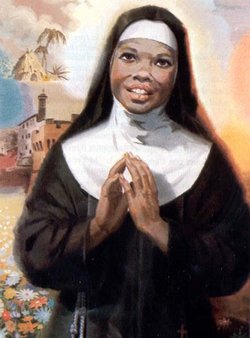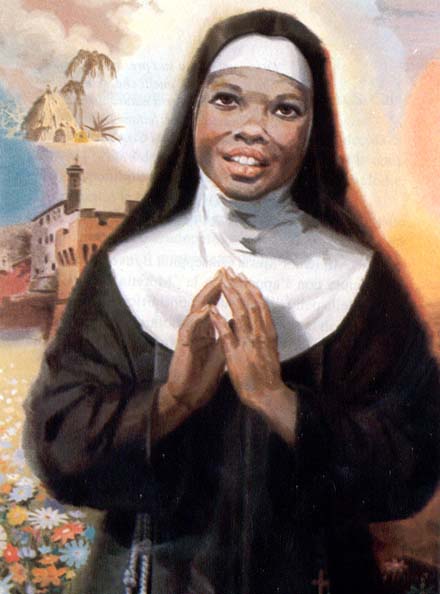Known throughout her lifetime and to this day as "La Moretta" due to her ebony skin, Maria Giuseppina showed a special proficiency in music, becoming in a short period of time, an excellent organist. Joining the Poor Clares, following the suppression of the Monastery of Belvedere, she moved to Serra de' Conti, where she was soon named Vicar, Mistress of Novices and ultimately elected Abbess.
Possessing a humble and joyful style, always fully available to the service of the community, faithful to the monastery rules, she led above all, an exemplary life immersed in God and in prayer.
"La Moretta" passed away during the evening of April 24, 1926, at the Monastery of Serra de' Conti aged 80 or 81, as her exact date of birth remains unknown. On her deathbed, Benvenuti promised one of the nuns, that upon the moment she would enter the joy of Paradise, she would send her a signal. The following day, in the early hours of the morning, a monastery bell started ringing, untouched by any hand. It was heard not only by the nun whose promise Benvenuti had given, but also by the other nuns as well by the people of Serra de' Conti.
Interred at the Cemetery of Serra de' Conti, at a later date her remains were moved inside a chapel found at the same cemetery when it became property of the Poor Clares. To this day her tomb remains the site of pilgrimages and prayer. In 1987, Bishop Oddo Fusi Pecci opened a diocesan inquiry in order to initiate the introduction of her cause of beatification. Pope Benedict XVI approved her heroic virtues on June 27, 2011.
Known throughout her lifetime and to this day as "La Moretta" due to her ebony skin, Maria Giuseppina showed a special proficiency in music, becoming in a short period of time, an excellent organist. Joining the Poor Clares, following the suppression of the Monastery of Belvedere, she moved to Serra de' Conti, where she was soon named Vicar, Mistress of Novices and ultimately elected Abbess.
Possessing a humble and joyful style, always fully available to the service of the community, faithful to the monastery rules, she led above all, an exemplary life immersed in God and in prayer.
"La Moretta" passed away during the evening of April 24, 1926, at the Monastery of Serra de' Conti aged 80 or 81, as her exact date of birth remains unknown. On her deathbed, Benvenuti promised one of the nuns, that upon the moment she would enter the joy of Paradise, she would send her a signal. The following day, in the early hours of the morning, a monastery bell started ringing, untouched by any hand. It was heard not only by the nun whose promise Benvenuti had given, but also by the other nuns as well by the people of Serra de' Conti.
Interred at the Cemetery of Serra de' Conti, at a later date her remains were moved inside a chapel found at the same cemetery when it became property of the Poor Clares. To this day her tomb remains the site of pilgrimages and prayer. In 1987, Bishop Oddo Fusi Pecci opened a diocesan inquiry in order to initiate the introduction of her cause of beatification. Pope Benedict XVI approved her heroic virtues on June 27, 2011.
Sponsored by Ancestry
Advertisement
Advertisement


